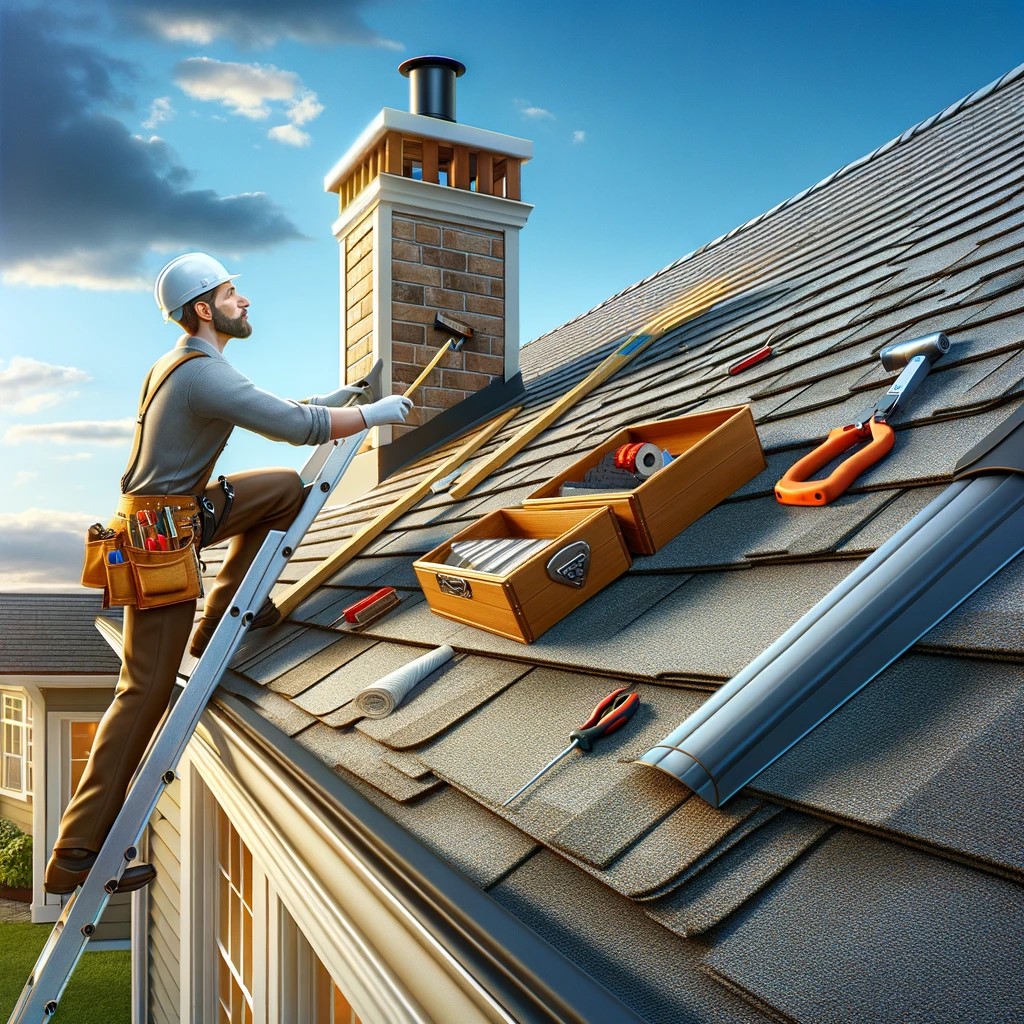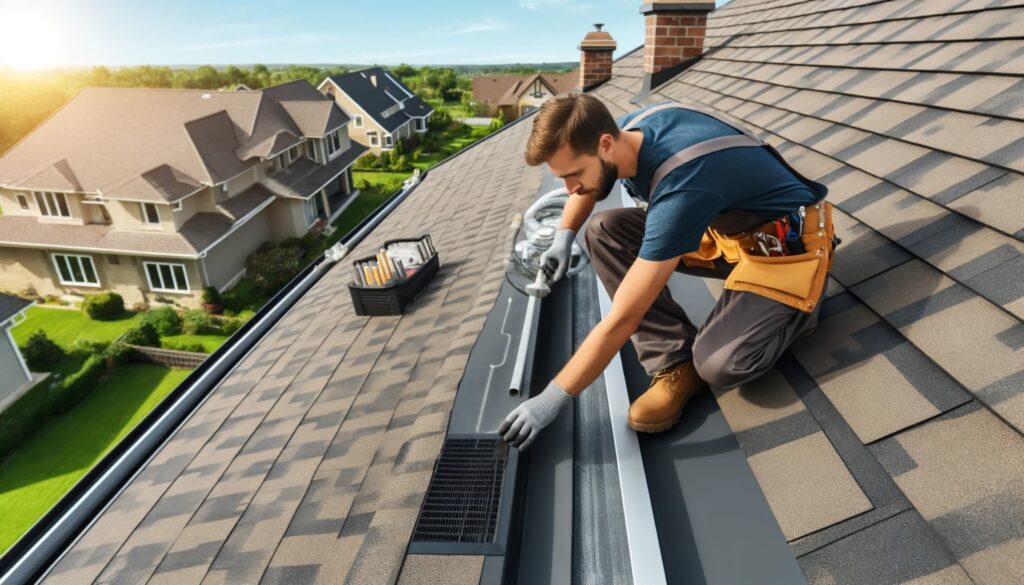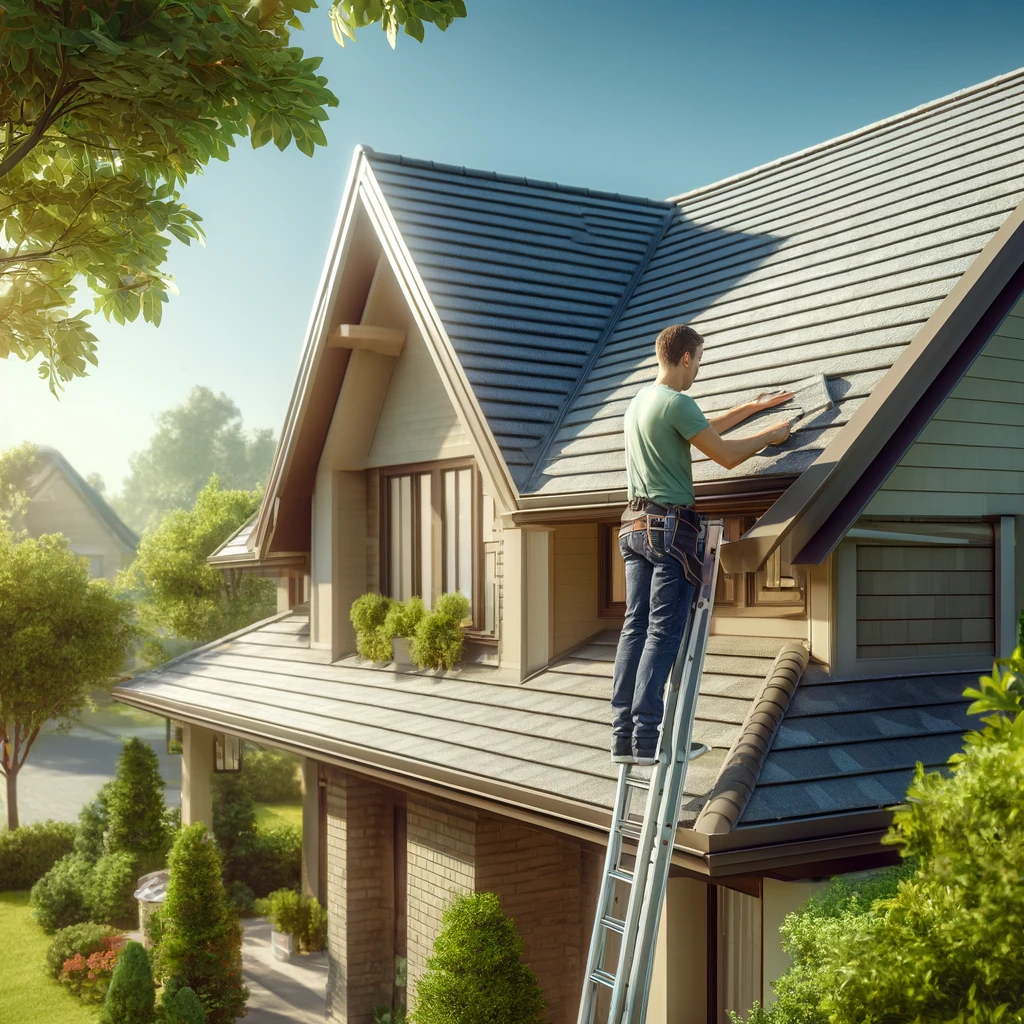Understanding Roofing: Why It is So Important To Know About Your Roof
The silent protector — your roof, your home. Meaning it’s not at the top of mind until something breaks: a surprise leak or an absent shingle. The thing is, a roof in good working order — like any other important part of your home — is not just important for safety and comfort; it also protects the investment you have in your property.
Knowing the basics of a roof is not enough when you need to understand your own. This includes learning about each of its aspects as well as the various types of roofing materials and essential maintenance processes to keep it in top condition. It allows you to know exactly what is happening with your roof, helps save money, prevents issues from becoming major ones and increase the value of your home.
So why should you bother to pay attention to this much-ignored part of your house?
In the long run, money savings: Maintaining a roof will help it wear down over time without having to replace pieces or the whole shebang prematurely. By doing so, you will reduce the element of surprise and better track how much to budget for future roof maintenance.
Avoiding huge problems: When you know how to detect the very early indication of roof covering troubles, you can act upon them prior to they become costly repair work or damages that might effect your house’s architectural stability.
A roof you can trust to protect your family: Because of its high-levels quality, a new solid and strong roof will keep your loved ones safe throughout dangerous storms which batter the world. It also helps with energy savings for temperature control within your home and in the health of your family as a whole.
Improving the resale value of your home: A functioning roof is a major factor for attracting potential buyers, making your property more valuable in the market and potentially savoring higher bids.
The goal of this guide is for homeowners to have a thorough understanding of their (roof) and be able to keep safe your home, as well as make informed decisions. We will be considering the anatomy of a roof, looking at common types and materials used for roofs and touching on regular maintenance practices that you can do as well out of necessity.
The Basics of Your Roof System — The First Line of Defense For Your Home
For you to get a better understanding about the different types of roofs and roofing materials, let us all first learn what is built as a well-built roof: its key components Each of these parts is an important key to preserving the integrity and stability of your home.
Sheathing: The sheathing is the foundation of your roof, and it serves as the structural base for all other components of your roofing system. It generally consists of plywood, oriented strand board (OSB), or similarly constructed materials that hold the load evenly over a wide area and provide the strength to support heavier materials such as underlayment and roofing. The sheathing protects your roof from the wind, driving rain and snow.
Roofing Felt: Roofing felt is a layer of protective material installed over the sheathing, acting as a secondary water barrier. If the roofing material fails, it keeps liquid from seeping beneath that material and spoiling your home. Common underlayment is made from asphalt saturated felt or synthetic materials, and a multitude of variations on that theme with different resistance to moisture/UV and durability levels.
Flashing: Flashing is a big part of making sure that your roof penetration chimeny, vents, skylites and dormers all stay watertight. It usually consists of flat roofs that are installed in such a way as to not allow water into the structure. its components are formed by metal bands (usually galvanized steel or aluminum) and their placement is skilled. Flashing is the KEY to stopping leaks, mold, and future structural damage.
Roofing Materials. The roof or roofing material is the top layer of a building, covering the top which protects from weather exposure and gives architectural appeal as well. There are different ones for durability, cost, and just plain looks. In part 2, we walk through the most common roofing materials:
For essential information about roof weatherproofing, don’t miss our 7 Essential Weatherproofing Tips for roofs: Boost Energy Efficiency and Home Comfort
Gutter System The gutter system is another part that sometimes is not thought about to be all the important, but they can make a huge difference in how your foundation of home holds up. It consists of a series of channels that will collect water from the roof and deliver it to downspouts, avoiding standing water that causes leaks, foundation issues and landscaping difficulties. In order to keep water away from your roof and home, cleaning and maintenance on a regular basis are especially important for the optimal functioning of your gutter system.
Explaining to you how these individual parts work is a good way for you to appreciate the complicated engineering that goes into constructing a roof properly. That knowledge can also help you decide when it may be time for Central Roofing Company to step in and make a repair, perform maintenance on your roof or even replace it.
What Type of Roof Should I Get For My Home?
Now that you have the basics down, we will talk about different roof types and what makes them unique. Each comes with its own advantages and disadvantages, which can impact everything from appearance, functionality to cost. The right roof type for your home will depend upon many factors such as the climate in which you live, architectural style of nearby houses, your budget and predilections.
Gable Roof : A gable roof is a simple, triangular shape that slopes down on two sides and meets at the ridge. Therefore, put the last nail in the coffin of your choice to build a roofing gable on your next home project. They provide good water shedding and have adequate attic space for storage or future expansion. That said, gable roofs are not impervious to damage if they are in an area of high wind because the flat surface also can make for increased air resistance.
Hip Roof: The 4 slopes protect more from wind compared to gable roof. This construction is especially important in high wind or snow regions due to its design and tensile strength. Hip roofs tend to look more balanced and share the advantages of gabled roofs explained earlier. That said, they are often harder to build out since you need training in more complex carpentry, which could result in higher startup fees.
Flat Roof: This type of roofing is so named, because it essentially looks flat; however, in reality there is a very slight pitch to allow for drainage. They appear mostly on commercial buildings but are a feature of certain modern homes, especially in regions that have reduced WUI risks due to temperate weather. The look — In addition to their modern and almost uniform appearance, flat roofs also create usable rooftop space that can be used for decks or gardens. But this type needs specific and frequent maintenance to avoid water from pooling which can lead to leaks.
Gambrel Roof: The gambrel roof is a two-sided symmetrical roof design that includes two slopes on both sides of the ridge. Two slopes in these roofs, an abrupt lower slope and a more gradual upper one. This design allows for additional height in the attic, meaning you can have a loft up there or just maximize storage space. Gambrel Roofs prevail in farmhouse or conventional styles, and highlight an exception to the rooftop line that gives the format some detail.
Mansard Roof: A mansard roof is a unique form of style featuring four sides, each side having two slopes. The lower part of the slope is almost like a cliff, and falls very steep while it levels out high above. In no time flat that space within the roof frame — which frequently winds up becoming a bedroom or different living spaces– is more usable. Mansard Roofs Mansard roofs are characterized by two slopes on each of the four sides, with a steeper lower slope and then a shallow one on top.
Selecting the appropriate roof type is probably one of the most essential decisions a homeowner may experience. Knowing the pros and cons of each kind can help you make a smart choice for your home to not only worth more money, but work better.
Picking the Perfect Roofing Material — Weighing Durability, Aesthetics and Affordability
Having now learned about the main types of roof, next we shall put on our hard hat and pickaxe (chemicalanslooza) and delve deep into Roofing materials. One of the biggest decisions you make on your roof is what material you want to choose as it affects its longevity, look and cost in general. Both of the options come with their own set of advantages and disadvantages; hence, one must see what is required by him/her in terms of usage and money.
Asphalt shingles (most popular, available in a wide range of styles and colors, affordable) They are actually among the easiest to install and have easier upkeep as well, which makes them a favourite of homeowners on a budget. Different types of asphalt shingles are available like three-tab shingles, architectural shingles or fiberglass to balance durability and aesthetics. Anyway, asphalt shingles are in the middle when it comes to lasting a home 15-20 years between needing replacement with other options.
Metal roofing keeps rising in popularity thanks to its unique advantages that include excellent longevity, durability and energy efficiency. Old steel drain pipe Steel, aluminum, or copper were all possible materials; each has their own advantages. Metal Roofing has many benefits such as they are fire, wind and hail resistant which makes them a popular choice in areas of severe weather. They are also heat-reflective surfaces that can help your home stay cool in the summer, lowering energy costs. Metal roofing is available in a huge range of styles — from traditional standing seam to modern corrugated panels — giving property owners many aesthetic options. Metal vs Asphalt ShingleHowever, metal roofing generally does cost more than asphalt shingles.
Clay or Concrete Tiles, known for the traditional and elegant look, clay or concrete tiles are commonly used on Mediterranean Homes or Spanish inspired architectural style homes. They are also popular for their strong wear-resistant, fire-proof and anti-fading properties. Getting them may also see you through the years to come, so they are truly a form of investment for the long run. But clay and concrete tiles heavy, needed a solid roof structure able to support their weight. They also tend to be more expensive than asphalt shingles or even metal roofing.
Slate roofing typically lasts for more than a century; the longest-lasting of any material. A type of natural stone, it boasts both beauty and durability. It is also fire-, wind- and hail-resistant. A slate roof signifies luxury and status and is capable of increasing the house value substantially. Slate, however is very costly material so the installation of slate roof and maintenance are required skilled labor. Slate roofing has a weight of its own requiring a sturdy roof structure in turn.
Alternative Roofing Materials solar tiles green roofs Solar tiles replace your specific roofing material allowing sunlight to pass through onto the solar cells underneath and generate clean energy. Green roofs* are roofs where plants has been grown. They insulate the building, decrease urban heat and they also contribute to live in more sustainable environment.
Your roof repair needs to be done quickly and efficiently with the correct materials. Consider your local weather which can affect durability, the aesthetics of each type of roof as well as installation costs to make an educated decision that will increase both financial and resale value for years to come.

Why Roof Maintenance is So Important- Extending the Life of Your Investment
The correct roof type and materials are essential, but so is regular maintenance. This is a preventative measure to avoid costly repairs and maintain your roofs ability to protection for years down the track. Like preventative maintenance for your home’s primary defense system.
What Are The Pros of Regular Roof Maintenance?
- Fewer Roof Replacements: Keeping a close eye on your roof will prevent small issues from getting bigger, in turn lengthening the time before you need to replace your roof.
- Cost-Effective Repairs: Fixing issues while they are little can stop them from growing into costly repairs.
- Mechanical Protection: A roof that is in good standing can effectively direct water away from the building, preventing leakage and subsequent rot.
- Better Energy Efficiency: An immaculate rooftop reflects daylight better, keeping your home cooler in the late spring and taking less of a toll on energy bills.
- Higher Property Value – A well-kept roof increases the overall value of your home, because it can keep your property taxes down and make is more attractive for buyers.
Homeowner Maintenance : Simple Tasks to Do at Home
- Gutter Cleaning: It is very important to clear out debris from your gutters every so often to ensure water can properly drain from them and not sit there building up that may cause leaks and damage to the foundation.
- Roof Inspection: You should visually inspect your roof at least twice a year for any signs of damage, like missing or damaged shingles, cracked flashing, and leaks. When looking at the nest with binoculars be sure to use them safely from either the ground or a ladder.
- Tree Trimming: Heavy branches hanging above your roof increase the risk of damage during storms or from leaves and debris falling. Prune branches that hang over your roof to keep them from damaging it.
- Roof Ventilation: Moisture leads to long-term rot and mold in the attic space so it is important to keep your roof well ventilated. Regularly check your vents and make sure they are unobstructed, clean, and functioning properly
Indications Your Roof Is In Trouble
- Leaks: Some key symptoms of leaks are water marks on ceilings or walls, dripping water, and dampness in attic.
Missing, Damaged or Curled Shingles - Lacking Flashing: Cracked or Missing: Look for cracks, gaps, or lacking sections of flashing about chimneys and skylights.
- Regrowth Spot: That regrowth spot is moss or algae growth and it can be harmful to your roof — blocking proper ventilation of your roof as well.
- Sagging or Dips: Joshua Inspection your roof for areas that appear to be sagging downward or depressed etc.
Although you can do some of the maintenance tasks yourself, you need an expert to deal with certain issues. As per the inspection, if you have any leaks at all or see signs of significant damage contact a qualified roofing contractor and get your shelter in good shape.
Regular roof maintenance is one of the many small investments you will make in your home over time that adds up to big dividends. A strong, well maintained roof protects those people and things most important to you.
Why You Should Get a Roof Inspection to Keep Hidden Problems at Bay
Maintain your roof regularly, but keep in mind that even the most vigilant homeowner may not always be aware of hidden issues that are developing beneath their roof. Enter professional roof inspections, a way to dive deep into the health of your roof and find solutions to help remedy any issue before it turns into weeks or months worth of headaches.
The Need of The Professional Roof Inspection
- Discover Problems Sooner: The training, experience, and tools professional inspectors use can pick up on even the most minor warning signs of damage much more easily than you might notice for yourself.
- Prevents Costly Repairs: By catching problems early, you can prevent small problems from turning into big repairs which could cost you a lot of time and money down the road.
Satisfaction that a Professional Has Looked at Your Roof: Even when you do not have leaks or damage, knowing your roof was inspected properly gives peace of mind. - Insurance Reports: Which can be a godsend in the case of an insurance claim, providing proof that your roof was in good condition prior to any damage.
- Warranty Obligations: A lot of roof warranties stipulate that the owner schedules regular professional inspections inorder to maintain coverage.
A Pro Roof Inspector Sees There Issues
- Damaged Shingles: Cracks, missing shingles, curled or damaged-to-the-extent-of-leaking material are all signs your roof is again at the end of its life.
- Flashing: The inspector will inspect the flashing around chimneys, vents and skylights for gaps and/or missing areas to prevent water from entering.
- Underlayment: The inspector may check the condition of underlayment, which is most likely if they have the ability and access to safely do so, work around roof details (chimneys) or outbuildings. Signs of tears in the paper, signs of water intrusion into a building through this layer might indicate a breach of this weather barrier.
- Ventilation: The inspector will also look at the ventilation system to make sure that all is in proper working order and no obstructions are blocking the air from flowing out of the attic causing moisture to build up.
- Structural: The inspector will look at the roof for problems like sagging or dipping, which can point to structural issues
The Best Time to Schedule a Roof Inspection
- Following a Storm: If there has been a significant storm in the area, it is important to make sure that you have your roof inspected so as to check for any damages caused by high winds, heavy rains or even hail.
- Pre-Purchase: If you are considering buying a home, having the roof inspected before putting in an offer can bring to light critical problems that need addressing or replacing, which will help guide you in your purchase decisions.
- What to do if you suspect a leak: If signs of a water leak have been noted, an Infrared professional inspection can locate the source of water without destruction and guide on proper repairs.
- Preventative Maintenance: Even if you do not notice any signs of obvious damage, routine inspections can catch minor issues before they grow into larger ones that compromise your roof.
Getting a professional roof inspection is an investment in the overall health of your home. This is the check that will have a thorough evaluation for some reassurance in addition to having peace of mind as well knowing your investment is problem free.
Frequently Asked Questions about Your Roof
How do I know when my roof requires a professional inspection?
You will need to contact a local roofing contractor for an inspection if you see any of the following:
- Signs of leakage: Wet spots on ceilings, water dripping; soakage in attic.
- Broken shingles: As we mentioned, when the material of your roof deteriorates and shakes off numerous granules which come in direct contact with sunlight, it is a sign that you need to replace your roof as soon as possible.
- Loose, damaged or missing flashing: Check around chimneys, skilights and vent pipes.
- Sagging or depressions: Go through your roof to see if there are sagging and signs of structural weakness.
Does my roof need to be inspected regularly?
This recommended frequency can vary depending on the type of your roof and where you live, but there are certain situations when a professional inspection is always a good idea.
- After a heavy rain, high winds, or hail storm:To determine any damage caused by the weather.
- When you purchase a home: To find any problems before they get repaired or changed.
- Every 2-3 years: As long as nothing pressing happens in vehicle you should take it every 2-3 years to find minor issues earlier on.
Roof maintenance vs Roof inspection
Roof maintenance tasks there are around the home that most homeowners can carry out, such as clearing gutters, trimming back overhanging branches and visually checking for damage. A roof inspection, however, is a more detailed professional evaluation that can discover damage which cannot otherwise be found. Maintenance is best thought of as preventative care and inspection a deeper dive into the health of your roof.



